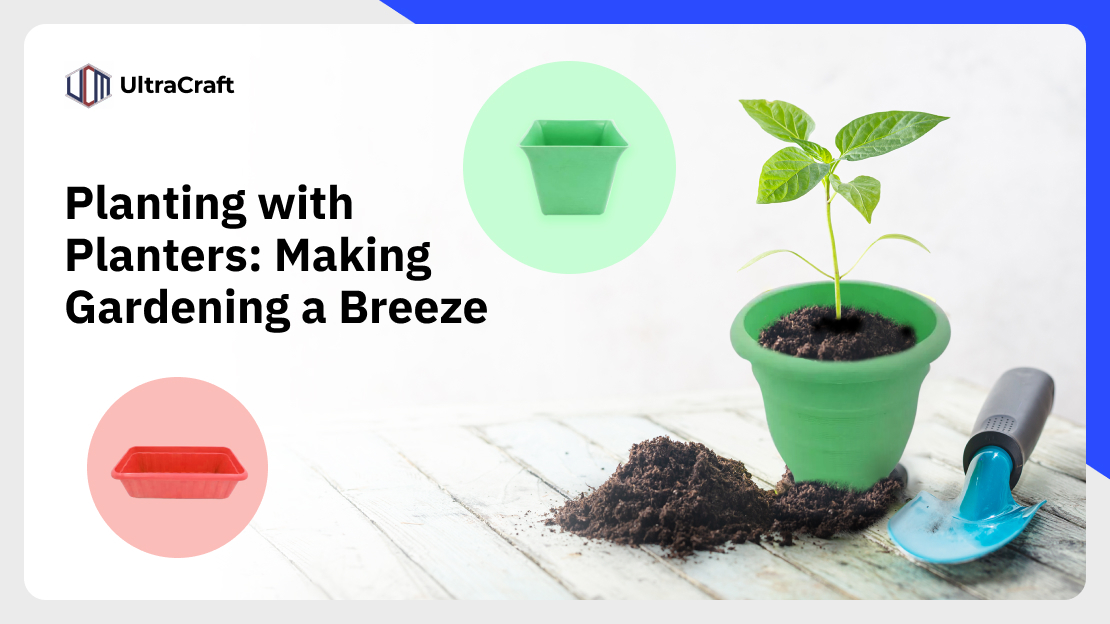Planting with Planters: Making Gardening a Breeze
Introduction
Whether you’re a beginner or an experienced gardener, having the right planters can make a big difference in the success of your plants. Planters come in a variety of sizes, shapes, and materials, so you can find one that fits your needs and your budget. With the right planters, you can create a beautiful and vibrant garden with minimal effort. In this guide, we’ll discuss the benefits of planters, the different materials available, and the factors you should consider when choosing the right planter for your garden.
Benefits of Plastic Planters
Due to their many advantages, plastic planters are becoming more and more popular among gardeners. Some benefits of using plastic planters in your garden include the following:
1. Durability: Plastic planters are extremely durable and can withstand harsh weather conditions such as extreme heat or cold, heavy rain, or strong winds. They are also resistant to cracking, chipping, or breaking, which makes them a great option for long-term use. Unlike other materials such as terracotta, which can easily break or crack, plastic planters are known for their resilience and long-lasting nature.
2. Affordability: Another major advantage of plastic planters is their affordability. They are relatively inexpensive compared to other types of planters, such as ceramic or metal. This makes them a great option for those on a budget who want to create a beautiful garden without breaking the bank.
3. Variety of plants: Plastic planters can be used to grow a wide variety of plants, including herbs, flowers, and vegetables. Their versatility allows gardeners to experiment with different types of plants without worrying about the plant’s suitability. Furthermore, plastic planters are available in different sizes and shapes, making them suitable for plants of all sizes, from small herbs to large trees.
4. Customization: Plastic planters come in a range of colors and designs, which makes them perfect for customization. Gardeners can choose a color that complements their garden’s aesthetic or select a unique design that adds personality and style to their outdoor space. Additionally, plastic planters can be painted or decorated with stickers to create a more personalized look.
5. Low maintenance: Plastic planters require very little maintenance compared to other types of planters. They do not need to be regularly watered or fertilized, and they can be easily cleaned with soap and water. Additionally, plastic planters do not attract pests, which reduces the need for pesticides or insecticides.
6. Lightweight: Plastic planters are lightweight, which makes them easy to move around. This is especially useful if you want to rearrange your garden or move your plants to a different location. Furthermore, their light weight makes them easy to transport, which is useful for those who like to take their plants with them when they move.
7. Recyclable: Many plastic planters are made from recyclable materials, which makes them an eco-friendly option for gardeners. Once the planter has reached the end of its life cycle, it can be recycled to create new products, reducing the amount of waste that ends up in landfills.
It is important to note that not all plastic planters are created equal. When choosing a plastic planter, it is important to consider factors such as its thickness, drainage, and UV resistance. A high-quality plastic planter will be thicker and more durable, with good drainage to prevent waterlogging. Additionally, plastic planters that are UV-resistant will not fade or crack over time, which ensures their longevity.
One of the main advantages of plastic pots is their portability. As they are lightweight and easy to move, gardeners can easily move their plants to different locations depending on their sunlight and water requirements. Additionally, plastic pots are available in a range of sizes and shapes, making them suitable for plants of all sizes.
How Planters Make Gardening a Breeze
Plastic planters have revolutionized the gardening industry by making it easier and more productive. The capacity of plastic planters to hold water is one of its most distinctive features. Some plastic planters have built-in water reservoirs, which enable the plants to take up water as needed and lessen the need for frequent watering. Gardeners who live in dry climates or who lack the time to routinely water their plants will particularly benefit from this feature.
There are also hanging plastic planters, which are perfect for trailing plants like ivy or petunias. These planters come with hooks that allow them to be hung from a wall or fence, adding a decorative touch to your garden. Window boxes are another type of planter that can be used to create a vertical garden. They are long and narrow, making them ideal for plants like succulents or herbs.
All levels of gardeners should consider plastic planters. For those looking to simplify gardening, their technological features including portability, a water retention system, customization, cost, and durability make them a great choice. They are an excellent investment for anyone wishing to establish or maintain a garden because they require little upkeep, are durable, and are simple to operate.
Conclusion
Planting with plastic planters has truly revolutionized the gardening experience. With their convenience, portability, and ease of use, planters have made it easier than ever to have a beautiful garden in any space. For those who don’t have the time, energy, or resources to maintain an outdoor garden, planters offer an easy and accessible way to enjoy the benefits of gardening. Whether you’re a gardening enthusiast or just getting started, plastic planters are an excellent way to make gardening a breeze.

